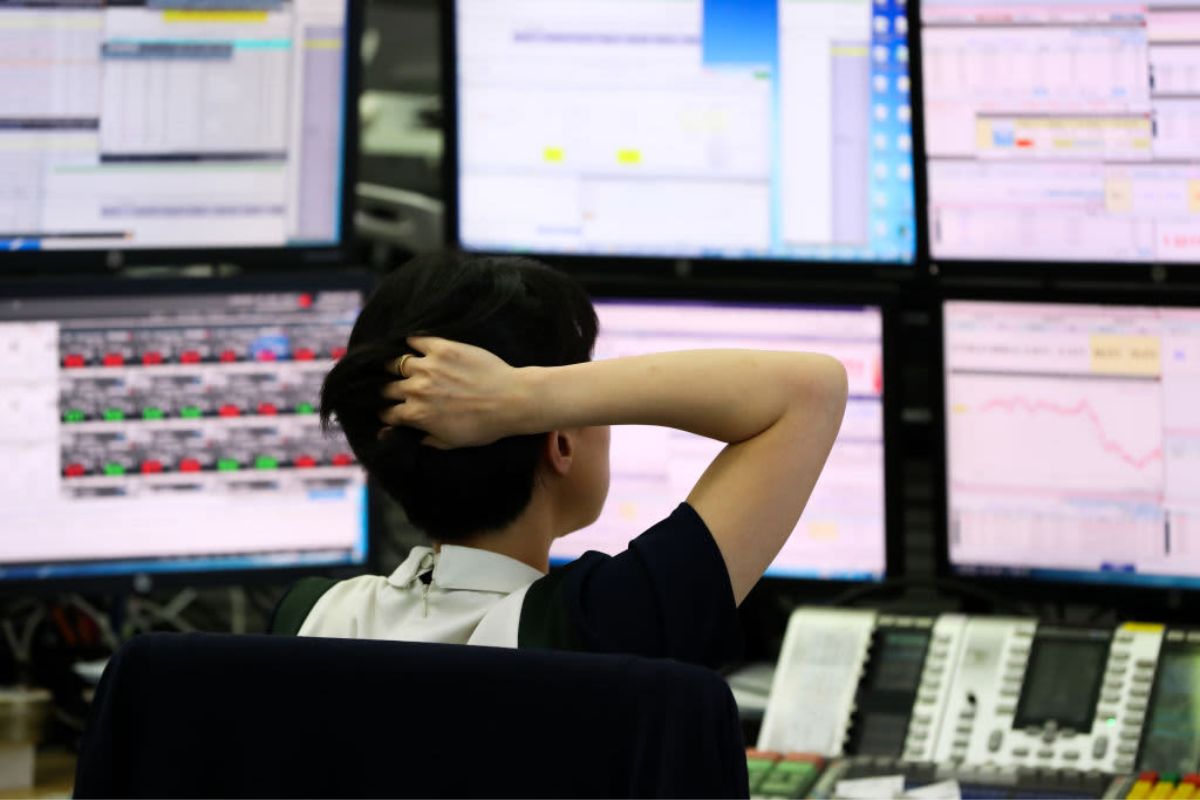China’s Market Returns Spark: The recent subdued performance of China’s market upon its return from a week-long holiday has sent ripples of uncertainty through Asian shares, leaving investors on edge.
The lackluster reception upon resuming trading has reignited concerns about the region’s economic stability and the potential spillover effects on global markets.
As attention shifts to how China’s policy decisions will shape market dynamics in the coming weeks, the stakes are high, and the implications far-reaching.
Stay tuned as we navigate through the intricate web of economic interplay and market sentiment to decipher the next moves in this unfolding saga.
Key Takeaways
- China’s subdued market return contributes to the lackluster performance of Asian shares.
- Economic uncertainties in the region intensify due to China’s underwhelming post-holiday performance.
- MSCI’s Asia-Pacific index remains stagnant as concerns about market stability persist.
- China’s market dynamics post-holiday highlight challenges and uncertainties impacting Asian shares.
Asian Markets Struggle Amid Global Rate Cut Uncertainty
Amidst the swirling uncertainty surrounding global rate cuts, Asian markets find themselves grappling with a tumultuous landscape of economic unpredictability. As prospects for early rate cuts globally cast a shadow over market sentiment, investors in the region are facing unprecedented challenges. With U.S. markets closed for a holiday, trading remained thin, exacerbating the unease among market participants.
Also Read: China’s Market Stability Quest: Unraveling the Short Selling Clampdown
The recent surge in tech stocks, which has been a key driver of market performance, now faces a critical litmus test with Nvidia’s upcoming results looming large on the horizon. Despite a slight dip in Japan’s Nikkei following a 4% surge last week, the overall sentiment in the region remains fragile and susceptible to external shocks.
Investors are closely monitoring the MSCI’s Asia-Pacific index, which has remained flat amidst the prevailing uncertainty. The lackluster return in Chinese markets has further dampened the overall outlook for Asian shares, contributing to a sense of fizzle in the region. The coming days will be crucial as market participants navigate the choppy waters of economic volatility and attempt to find solid ground amidst the storm of global rate cut speculations.
Chinese Markets Post-Holiday Gains and Policy Outlook
Following the Lunar New Year holiday, Chinese markets experienced modest gains in both blue chips and Shanghai stocks, with a cautious eye on potential policy stimulus amidst looming deflation concerns.
Despite the gains of 0.66% in blue chips and 0.85% in Shanghai stocks, investors remain on edge as the central bank refrained from implementing rate cuts, thereby keeping a lid on the yuan’s downward pressure.
The surge in tourism revenues by 47% during the holiday period provided a glimmer of hope amidst economic uncertainties. Analysts are closely monitoring the situation, expecting policymakers to step in with stimulus measures to combat the threat of deflation.
The delicate balance between economic growth and inflation remains a key concern for market participants, who are eagerly awaiting signals from authorities. As the global economic landscape continues to shift, all eyes are on China’s policy decisions and their potential impact on both domestic and international markets.
U.S. Market and Federal Reserve Dynamics
The U.S. market is currently navigating turbulent waters as high readings on producer and consumer prices have sparked a significant reevaluation of rate cut expectations. Bruce Kasman from JPMorgan’s warning of a potential 0.5% surge in core personal consumption inflation for January has sent shockwaves through the market, reshaping risk perceptions.
Federal Reserve representatives such as Vice Chair Philip Jefferson and Governor Christopher Waller are anticipated to provide insights on the economic outlook in light of these developments. The abrupt shift in market sentiment has swiftly diminished the likelihood of imminent rate cuts, triggering ripples across Treasury yields and igniting uncertainty among investors.
With inflationary pressures mounting and the Fed’s stance under scrutiny, market participants are bracing for a bumpy ride ahead. The delicate balance between economic growth and price stability now hangs in the balance, casting a shadow of doubt over the market’s future trajectory.
Nvidia’s Influence on Markets and Tech Sector Optimism
Nvidia‘s meteoric rise in the stock market landscape has set ablaze a fervent wave of tech sector optimism, propelling investors into a frenzied state of anticipation. The tech giant’s astounding 46% surge this year alone has not only caught the attention of Wall Street but has also become the talk of the town, contributing significantly to over a quarter of the S&P 500’s gains.
As the market eagerly awaits Nvidia’s upcoming results, expectations are soaring, with hopes that the company will surpass the already lofty predictions. Goldman Sachs, recognizing the immense potential in the tech sector, recently raised its S&P 500 index target, further fueling the fervor surrounding Nvidia. This surge not only reflects Nvidia’s prowess but also underscores the pivotal role that tech companies play in shaping market forecasts and driving investor sentiment.
Brace yourselves, for the tech sector is on fire, and Nvidia is leading the charge towards a brighter, more bullish future.
- Nvidia’s stock surged by a remarkable 46% this year, making it a standout performer in the market.
- The company’s success has contributed to over a quarter of the gains seen in the S&P 500.
- Market optimism is high as investors eagerly await Nvidia’s upcoming results, with hopes of exceeding already high expectations.
Currency, Commodities, and Global Economic Indicators
Amidst shifting global economic indicators, the interplay of currency and commodities markets reflects the intricate balance of forces influencing the financial landscape. Higher bond yields are bolstering the dollar against the yen, with looming intervention threats curbing further advances.
The euro, in contrast, has surged to its peak against the yen for the year, showcasing the divergent paths currencies are taking. Gold, on the other hand, is grappling with escalating yields, managing to hold steady amidst the turmoil.
In the commodities realm, oil prices are witnessing a bout of weakness as demand anxieties clash with the specter of potential supply disruptions in the volatile Middle East region. These fluctuations underscore the fragility of the current economic environment, where every fluctuation in currencies and commodities sends ripples across global markets.
As investors navigate these turbulent waters, the intricate dance between currency valuations and commodity prices remains a critical barometer of the world’s economic health.
Conclusion Of China’s Market Returns Spark
The lackluster return of China’s markets has sparked a fizzle in Asian shares, leaving investors uncertain amid global rate cut speculation. With the U.S. market dynamics and Federal Reserve actions adding to the mix, all eyes are on tech giant Nvidia’s influence on the sector.
As currency, commodities, and global economic indicators remain in flux, the future of Asian markets hangs in the balance, creating a volatile and unpredictable environment for investors worldwide.




